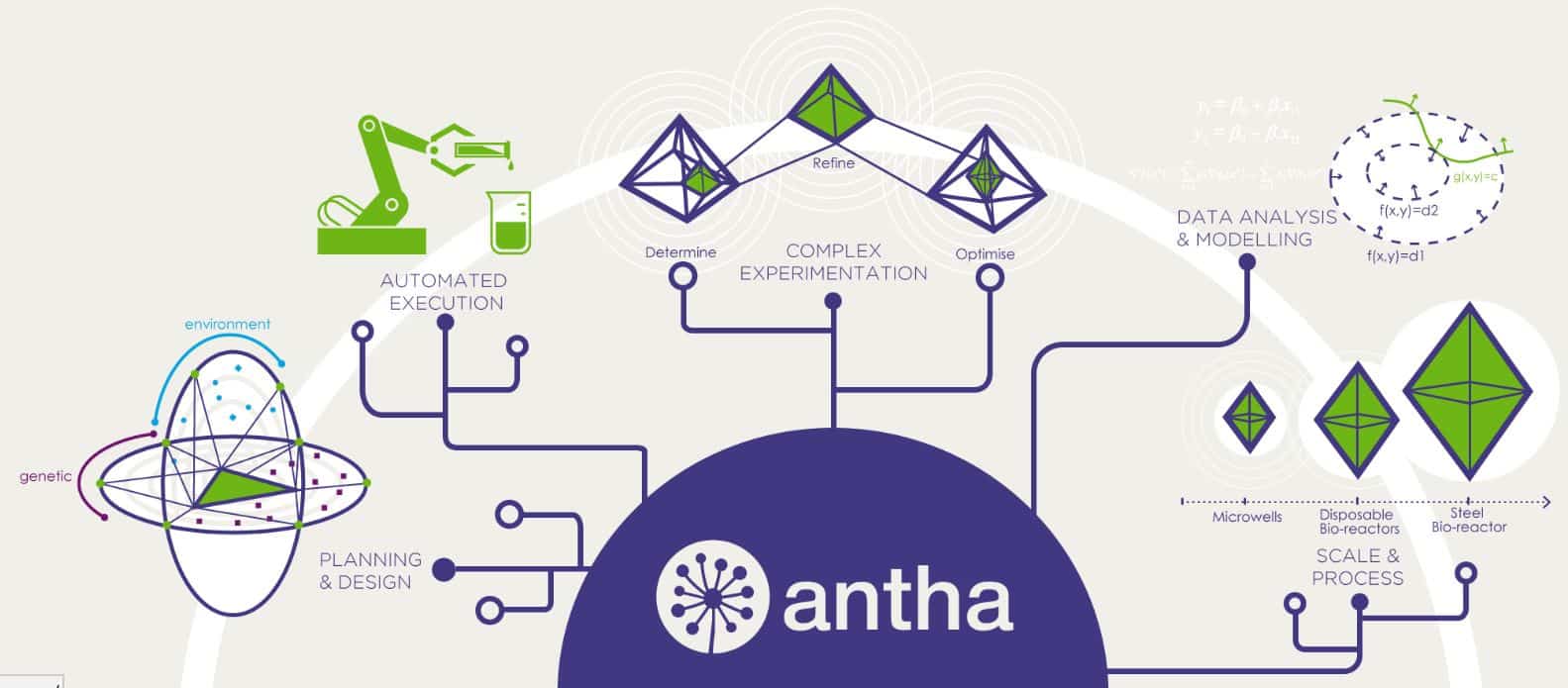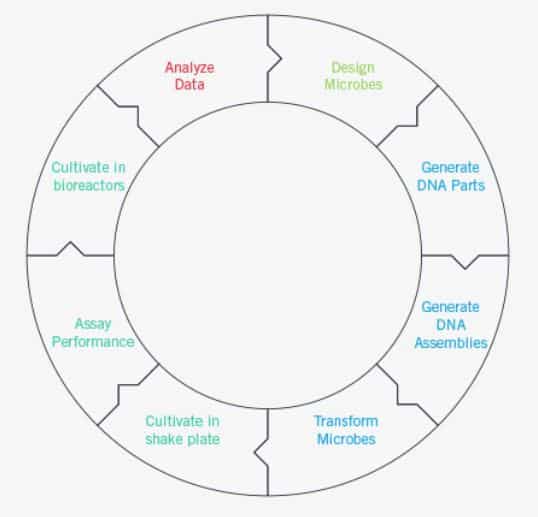3 Companies Building Nanorobot Factories
Table of contents
Table of contents

One of the most exciting aspects of nanotechnology, as described by Eric Drexler, is the notion of nanobots or nanorobots, tiny self-replicating machines that go about doing cool things at a molecular level like curing cancer or cleaning up polution. The big concern of course was what to do if these nanorobots started replicating uncontrollably which led to the emergence of “grey goo” theory, the idea that they would recreate indefinitely until the entire world was covered in a layer of grey goo that reached all the way to the atmosphere. To prevent the world from being inevitably covered in grey goo, we needed a kill switch in order to make sure we could stop them from replicating.
Sound pretty futuristic? It’s not actually. Today the concept behind nanorobots is evident in tiny biological machines being created called “designer microbes” or “genetically modified bacteria”. These biological “nanorobots” are made possible by a new and exciting technology called synthetic biology. Synthetic biology has enabled us to create tiny biological machines that can do everything from produce pharmaceuticals to sweat biofuels. We even created kill switches for our nanorobots by tricking them into thinking that they needed certain artificial nutrients to survive, nutrients which were only available in a controlled lab. Incredibly, some these nanorobots actually figured out how to substitute the artificial nutrients with elements found in the natural world or in some cases figure out they didn’t need the artificial nutrients entirely.
Controlling replication is just one of the many challenges faced by synthetic biologists who are trying to see past all the hype surrounding synthetic biology and develop economically viable commercial products. So far the technology hasn’t lived up to all the hype for investors. The Nanalyze Synthetic Biology Stocks motif is down over -30% since we created it nine months ago. Even though synthetic biology hasn’t treated investors very well, money continues to be poured into startups claiming to be developing designer organisms that will finally show the investment community the real potential of synthetic biology as an investment opportunity. The race is on to evaluate as many designer organisms as possible and then commercialize the ones which do incredible things. Here are 3 startups building factories to produce such organisms.
Zymergen
Founded: 2013; Funding: $44 million; Nanorobot Factory Name: Helix With a logo that appears to be half written in Wingdings, Zymergen’s marketing department wants you to know up front just how cool and “way out there” their technology really is. Zymergen has created a factory to produce designer organisms and they’ve managed to boost their appeal to investors 10-fold by using “big data” and “robotics”. That’s right. Zymergen has harnessed the power of “big data” and robotics to engineer and evaluate thousands of microbe strains in parallel in a circular fashion:
Zymergen is backed by many big names in the VC community like Draper Fisher Jurvetson, Innovation Endeavors, and Two Sigma Ventures. Their business model is said to be similar to an enterprise software company with multiple revenue generating contracts across a broad number of industries.
Ginkgo Bioworks
Founded: 2008; Funding: $54 million Nanorobot Factory Name: Bioworks 1 & 2. With an earlier head start than Zymergen, Ginkgo Bioworks has built the world’s first organism engineering foundry called Bioworks 1. This platform integrates advanced software, robots, and biology to rapidly design, build, and test organisms until they meet certain specifications. The foundry has been built to work with many types of cells, and is currently working on contracts for more than 20 organisms from customers looking for a yeast strain for animal feed, a new sweetener for beverages, and an organic pesticide. Ginkgo Bioworks recently ordered a minimum of 100 million base pairs of synthesized DNA from Twist Bioscience an amount equal to 10% of the total DNA synthesis market in 2015. The Company will use these DNA snippets to create made-to-order industrial microbes for their customers.
Synthace
Founded: 2011; Funding: $2.87 million; Nanorobot Factory Name: Antha. One interesting aspect of synthetic biology is that it requires hybrid expertise that crosses biology, chemistry, and computer engineering. In the future, designing synthetic organisms will become as simple as writing code that assembles building blocks into nanorobots that take a particular input and transform it into a particular output. The way Synthace’s platform accomplishes this is best described in the below diagram:

Conclusion
So there we have 3 companies building factories that can produce biological nanorobots which potentially can create efficiencies across almost every industry. If that gets you excited and now you want to invest in any of these 3 companies, unfortunately, you can’t because they are all privately held for now.
Sign up to our newsletter to get more of our great research delivered straight to your inbox!
Nanalyze Weekly includes useful insights written by our team of underpaid MBAs, research on new disruptive technology stocks flying under the radar, and summaries of our recent research. Always 100% free.















